Charles L. A. Clarke
Benchmarking LLM-based Relevance Judgment Methods
Apr 17, 2025Abstract:Large Language Models (LLMs) are increasingly deployed in both academic and industry settings to automate the evaluation of information seeking systems, particularly by generating graded relevance judgments. Previous work on LLM-based relevance assessment has primarily focused on replicating graded human relevance judgments through various prompting strategies. However, there has been limited exploration of alternative assessment methods or comprehensive comparative studies. In this paper, we systematically compare multiple LLM-based relevance assessment methods, including binary relevance judgments, graded relevance assessments, pairwise preference-based methods, and two nugget-based evaluation methods~--~document-agnostic and document-dependent. In addition to a traditional comparison based on system rankings using Kendall correlations, we also examine how well LLM judgments align with human preferences, as inferred from relevance grades. We conduct extensive experiments on datasets from three TREC Deep Learning tracks 2019, 2020 and 2021 as well as the ANTIQUE dataset, which focuses on non-factoid open-domain question answering. As part of our data release, we include relevance judgments generated by both an open-source (Llama3.2b) and a commercial (gpt-4o) model. Our goal is to \textit{reproduce} various LLM-based relevance judgment methods to provide a comprehensive comparison. All code, data, and resources are publicly available in our GitHub Repository at https://github.com/Narabzad/llm-relevance-judgement-comparison.
Judging the Judges: A Collection of LLM-Generated Relevance Judgements
Feb 19, 2025Abstract:Using Large Language Models (LLMs) for relevance assessments offers promising opportunities to improve Information Retrieval (IR), Natural Language Processing (NLP), and related fields. Indeed, LLMs hold the promise of allowing IR experimenters to build evaluation collections with a fraction of the manual human labor currently required. This could help with fresh topics on which there is still limited knowledge and could mitigate the challenges of evaluating ranking systems in low-resource scenarios, where it is challenging to find human annotators. Given the fast-paced recent developments in the domain, many questions concerning LLMs as assessors are yet to be answered. Among the aspects that require further investigation, we can list the impact of various components in a relevance judgment generation pipeline, such as the prompt used or the LLM chosen. This paper benchmarks and reports on the results of a large-scale automatic relevance judgment evaluation, the LLMJudge challenge at SIGIR 2024, where different relevance assessment approaches were proposed. In detail, we release and benchmark 42 LLM-generated labels of the TREC 2023 Deep Learning track relevance judgments produced by eight international teams who participated in the challenge. Given their diverse nature, these automatically generated relevance judgments can help the community not only investigate systematic biases caused by LLMs but also explore the effectiveness of ensemble models, analyze the trade-offs between different models and human assessors, and advance methodologies for improving automated evaluation techniques. The released resource is available at the following link: https://llm4eval.github.io/LLMJudge-benchmark/
LLM-based relevance assessment still can't replace human relevance assessment
Dec 22, 2024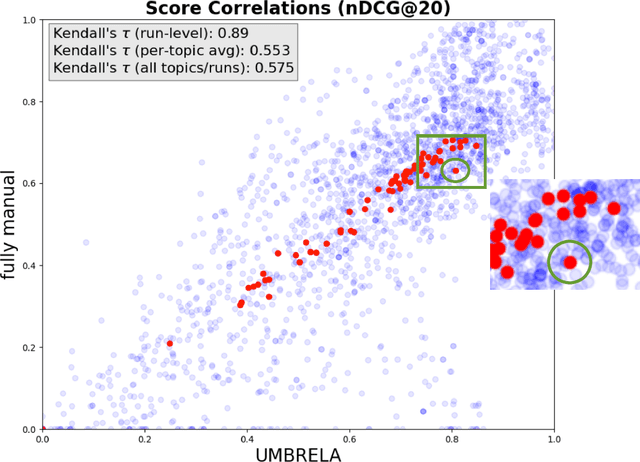
Abstract:The use of large language models (LLMs) for relevance assessment in information retrieval has gained significant attention, with recent studies suggesting that LLM-based judgments provide comparable evaluations to human judgments. Notably, based on TREC 2024 data, Upadhyay et al. make a bold claim that LLM-based relevance assessments, such as those generated by the UMBRELA system, can fully replace traditional human relevance assessments in TREC-style evaluations. This paper critically examines this claim, highlighting practical and theoretical limitations that undermine the validity of this conclusion. First, we question whether the evidence provided by Upadhyay et al. really supports their claim, particularly if a test collection is used asa benchmark for future improvements. Second, through a submission deliberately intended to do so, we demonstrate the ease with which automatic evaluation metrics can be subverted, showing that systems designed to exploit these evaluations can achieve artificially high scores. Theoretical challenges -- such as the inherent narcissism of LLMs, the risk of overfitting to LLM-based metrics, and the potential degradation of future LLM performance -- must be addressed before LLM-based relevance assessments can be considered a viable replacement for human judgments.
EMPRA: Embedding Perturbation Rank Attack against Neural Ranking Models
Dec 20, 2024



Abstract:Recent research has shown that neural information retrieval techniques may be susceptible to adversarial attacks. Adversarial attacks seek to manipulate the ranking of documents, with the intention of exposing users to targeted content. In this paper, we introduce the Embedding Perturbation Rank Attack (EMPRA) method, a novel approach designed to perform adversarial attacks on black-box Neural Ranking Models (NRMs). EMPRA manipulates sentence-level embeddings, guiding them towards pertinent context related to the query while preserving semantic integrity. This process generates adversarial texts that seamlessly integrate with the original content and remain imperceptible to humans. Our extensive evaluation conducted on the widely-used MS MARCO V1 passage collection demonstrate the effectiveness of EMPRA against a wide range of state-of-the-art baselines in promoting a specific set of target documents within a given ranked results. Specifically, EMPRA successfully achieves a re-ranking of almost 96% of target documents originally ranked between 51-100 to rank within the top 10. Furthermore, EMPRA does not depend on surrogate models for adversarial text generation, enhancing its robustness against different NRMs in realistic settings.
Annotative Indexing
Nov 20, 2024
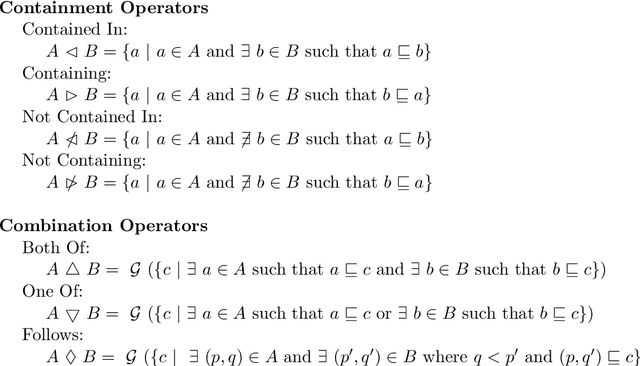
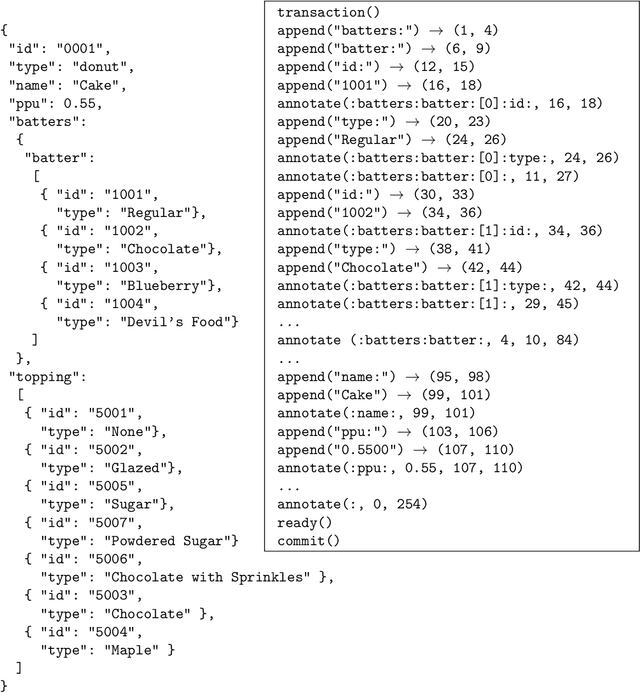
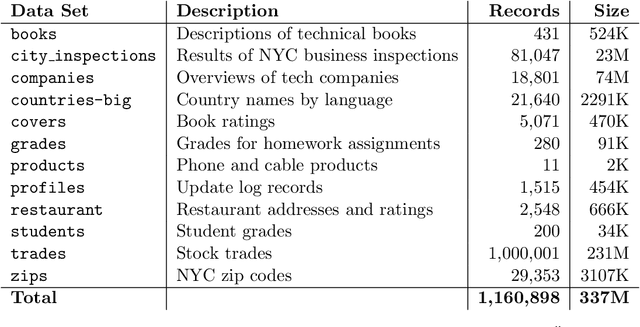
Abstract:This paper introduces annotative indexing, a novel framework that unifies and generalizes traditional inverted indexes, column stores, object stores, and graph databases. As a result, annotative indexing can provide the underlying indexing framework for databases that support knowledge graphs, entity retrieval, semi-structured data, and ranked retrieval. While we primarily focus on human language data in the form of text, annotative indexing is sufficiently general to support a range of other datatypes, and we provide examples of SQL-like queries over a JSON store that includes numbers and dates. Taking advantage of the flexibility of annotative indexing, we also demonstrate a fully dynamic annotative index incorporating support for ACID properties of transactions with hundreds of multiple concurrent readers and writers.
Beyond Utility: Evaluating LLM as Recommender
Nov 01, 2024



Abstract:With the rapid development of Large Language Models (LLMs), recent studies employed LLMs as recommenders to provide personalized information services for distinct users. Despite efforts to improve the accuracy of LLM-based recommendation models, relatively little attention is paid to beyond-utility dimensions. Moreover, there are unique evaluation aspects of LLM-based recommendation models, which have been largely ignored. To bridge this gap, we explore four new evaluation dimensions and propose a multidimensional evaluation framework. The new evaluation dimensions include: 1) history length sensitivity, 2) candidate position bias, 3) generation-involved performance, and 4) hallucinations. All four dimensions have the potential to impact performance, but are largely unnecessary for consideration in traditional systems. Using this multidimensional evaluation framework, along with traditional aspects, we evaluate the performance of seven LLM-based recommenders, with three prompting strategies, comparing them with six traditional models on both ranking and re-ranking tasks on four datasets. We find that LLMs excel at handling tasks with prior knowledge and shorter input histories in the ranking setting, and perform better in the re-ranking setting, beating traditional models across multiple dimensions. However, LLMs exhibit substantial candidate position bias issues, and some models hallucinate non-existent items much more often than others. We intend our evaluation framework and observations to benefit future research on the use of LLMs as recommenders. The code and data are available at https://github.com/JiangDeccc/EvaLLMasRecommender.
Report on the 1st Workshop on Large Language Model for Evaluation in Information Retrieval (LLM4Eval 2024) at SIGIR 2024
Aug 09, 2024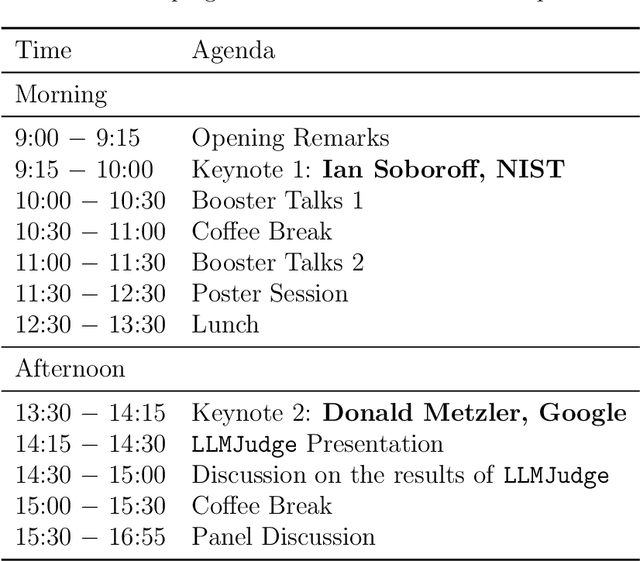
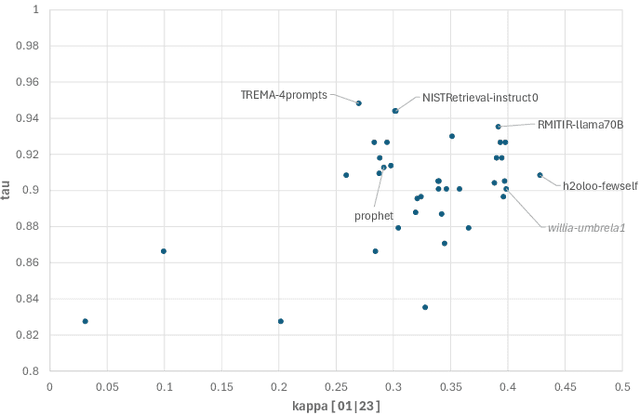
Abstract:The first edition of the workshop on Large Language Model for Evaluation in Information Retrieval (LLM4Eval 2024) took place in July 2024, co-located with the ACM SIGIR Conference 2024 in the USA (SIGIR 2024). The aim was to bring information retrieval researchers together around the topic of LLMs for evaluation in information retrieval that gathered attention with the advancement of large language models and generative AI. Given the novelty of the topic, the workshop was focused around multi-sided discussions, namely panels and poster sessions of the accepted proceedings papers.
LLMJudge: LLMs for Relevance Judgments
Aug 09, 2024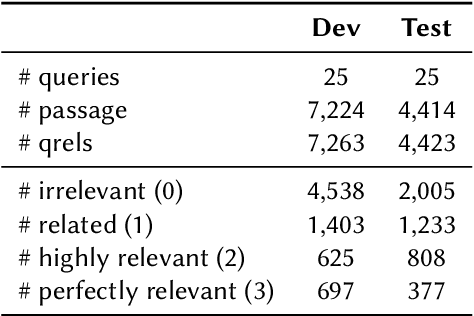
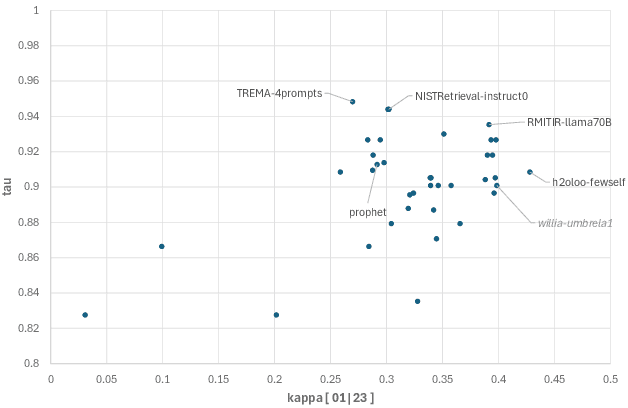
Abstract:The LLMJudge challenge is organized as part of the LLM4Eval workshop at SIGIR 2024. Test collections are essential for evaluating information retrieval (IR) systems. The evaluation and tuning of a search system is largely based on relevance labels, which indicate whether a document is useful for a specific search and user. However, collecting relevance judgments on a large scale is costly and resource-intensive. Consequently, typical experiments rely on third-party labelers who may not always produce accurate annotations. The LLMJudge challenge aims to explore an alternative approach by using LLMs to generate relevance judgments. Recent studies have shown that LLMs can generate reliable relevance judgments for search systems. However, it remains unclear which LLMs can match the accuracy of human labelers, which prompts are most effective, how fine-tuned open-source LLMs compare to closed-source LLMs like GPT-4, whether there are biases in synthetically generated data, and if data leakage affects the quality of generated labels. This challenge will investigate these questions, and the collected data will be released as a package to support automatic relevance judgment research in information retrieval and search.
Assessing and Verifying Task Utility in LLM-Powered Applications
May 03, 2024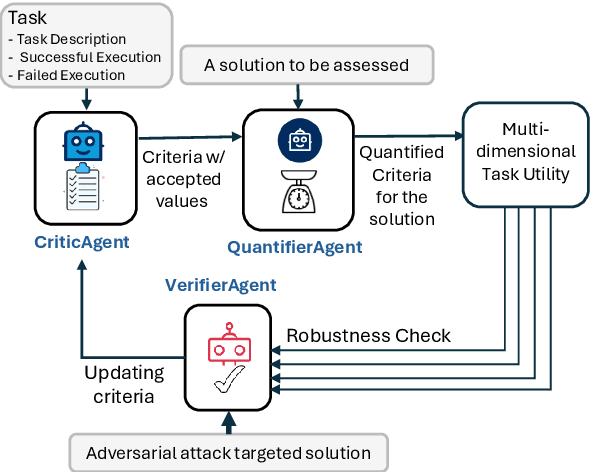

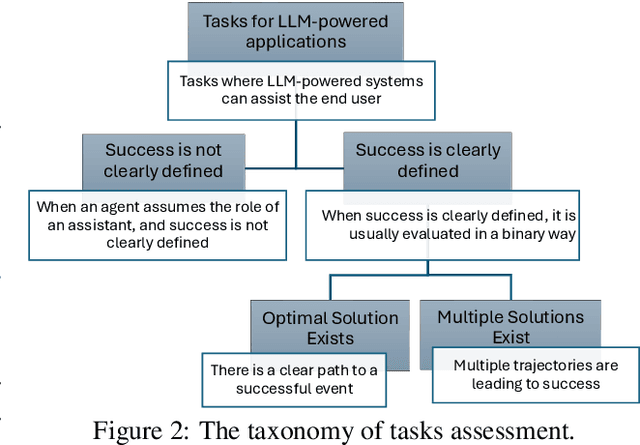
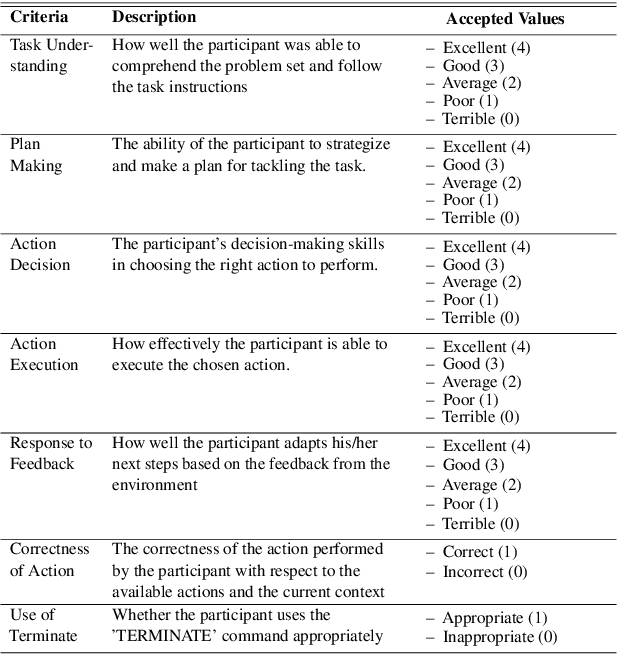
Abstract:The rapid development of Large Language Models (LLMs) has led to a surge in applications that facilitate collaboration among multiple agents, assisting humans in their daily tasks. However, a significant gap remains in assessing to what extent LLM-powered applications genuinely enhance user experience and task execution efficiency. This highlights the need to verify utility of LLM-powered applications, particularly by ensuring alignment between the application's functionality and end-user needs. We introduce AgentEval, a novel framework designed to simplify the utility verification process by automatically proposing a set of criteria tailored to the unique purpose of any given application. This allows for a comprehensive assessment, quantifying the utility of an application against the suggested criteria. We present a comprehensive analysis of the effectiveness and robustness of AgentEval for two open source datasets including Math Problem solving and ALFWorld House-hold related tasks. For reproducibility purposes, we make the data, code and all the logs publicly available at https://bit.ly/3w3yKcS .
Generative Information Retrieval Evaluation
Apr 11, 2024Abstract:In this chapter, we consider generative information retrieval evaluation from two distinct but interrelated perspectives. First, large language models (LLMs) themselves are rapidly becoming tools for evaluation, with current research indicating that LLMs may be superior to crowdsource workers and other paid assessors on basic relevance judgement tasks. We review past and ongoing related research, including speculation on the future of shared task initiatives, such as TREC, and a discussion on the continuing need for human assessments. Second, we consider the evaluation of emerging LLM-based generative information retrieval (GenIR) systems, including retrieval augmented generation (RAG) systems. We consider approaches that focus both on the end-to-end evaluation of GenIR systems and on the evaluation of a retrieval component as an element in a RAG system. Going forward, we expect the evaluation of GenIR systems to be at least partially based on LLM-based assessment, creating an apparent circularity, with a system seemingly evaluating its own output. We resolve this apparent circularity in two ways: 1) by viewing LLM-based assessment as a form of "slow search", where a slower IR system is used for evaluation and training of a faster production IR system; and 2) by recognizing a continuing need to ground evaluation in human assessment, even if the characteristics of that human assessment must change.
 Add to Chrome
Add to Chrome Add to Firefox
Add to Firefox Add to Edge
Add to Edge